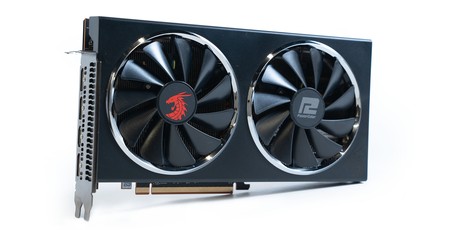
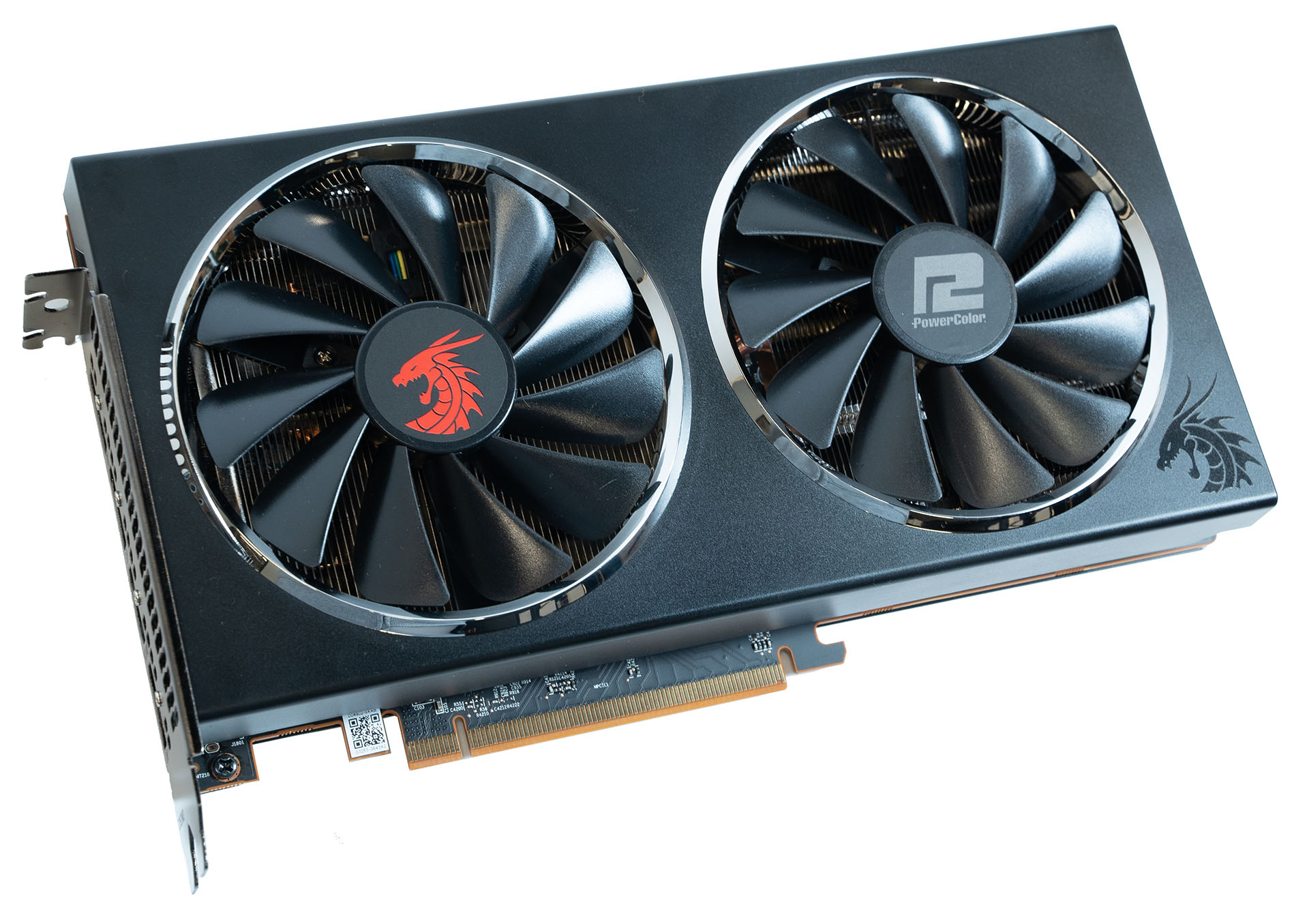
Manufacturer: PowerColor
UK price (as reviewed): £259.99 (inc. VAT)
US price (as reviewed): $299.99 (exc. tax)
The Red Dragon is one of the cards that qualified for the updated VBIOS, bringing its game and boost clocks to 1,560MHz and 1,620MHz respectively. As a measure of average in-game speeds, the game clock is the most important, and it’s a sizeable 13.5 percent higher than reference.
PowerColor has also opted to run the card with 14Gbps memory. Quizzed about why it chose to do this when it also has a lower-tier card using the same memory chips but at 12Gbps, it claimed that ‘the reason is Red Devil and Red Dragon have a higher PCB layer count, 10 versus 8 found on the stock 5600 XT, which means the memory signal is much cleaner and stable with our premium models. Having a 10-layer PCB is important to the higher clocks on the GDDR6 14Gbps memory.’ That seems logical, but it seems to contradict the fact that it has a second version of that lower-tier card, presumably with an eight-layer PCB, that does have 14Gbps memory. PowerColor’s response to us was that the yield rate of 10-layer PCBs is higher than eight-layer PCBs; we’ve pressed it to shed a bit more light on this and its own internal validation process.
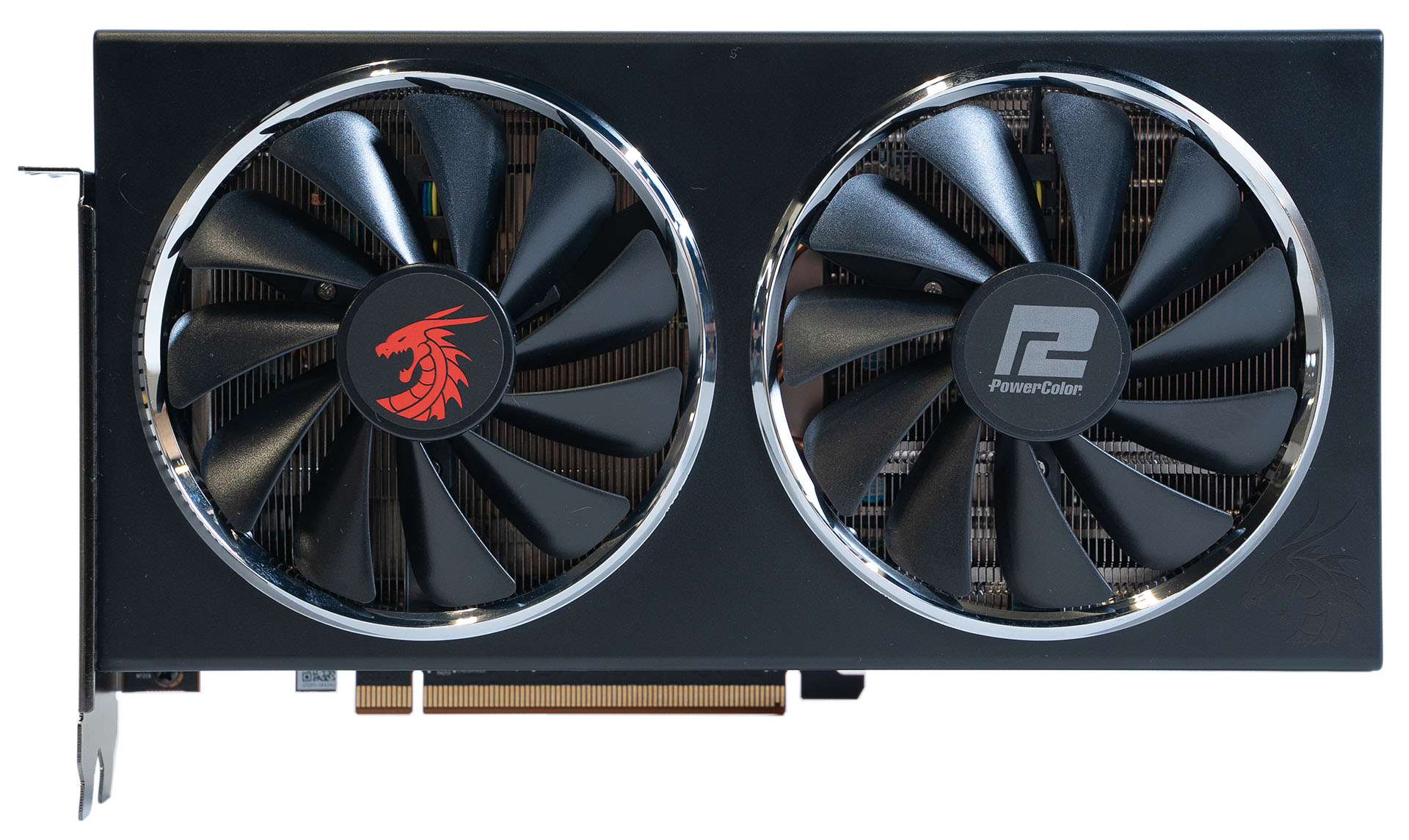
The plot is thickened yet further by findings at Igor’s Lab, which found that strenuous testing resulted in instability on 14Gbps cards including the Red Dragon. He was able to remove the instability by implementing a 50MHz memory downclock, which seems to add weight to MSI’s stance. However, PowerColor says it has been unable to replicate the findings. It also told us that it puts cards through a burn-in process before packaging; quite what that burn-in process entails is unclear, but we do know it involves 100 percent of the first production run that includes thousands of cards, then random samples for all subsequent runs after. Lastly, it has shared with us that RMA rates for its 14Gbps cards are within ‘normal levels’, which suggests customers are not experiencing significantly increased failures.
Back to the card itself, we find it to be smart looking. The all-black shroud is tidy, and the card is physically unimposing at 240mm long and with a true dual-slot form factor. Its 118mm height could prove problematic in the tightest of cases, especially with the eight-pin PCIe power plug not being indented, but it’ll be fine in most.
A solitary HDMI port is joined by a trio of DisplayPort connectors, and FreeSync 2 HDR is of course fully supported.
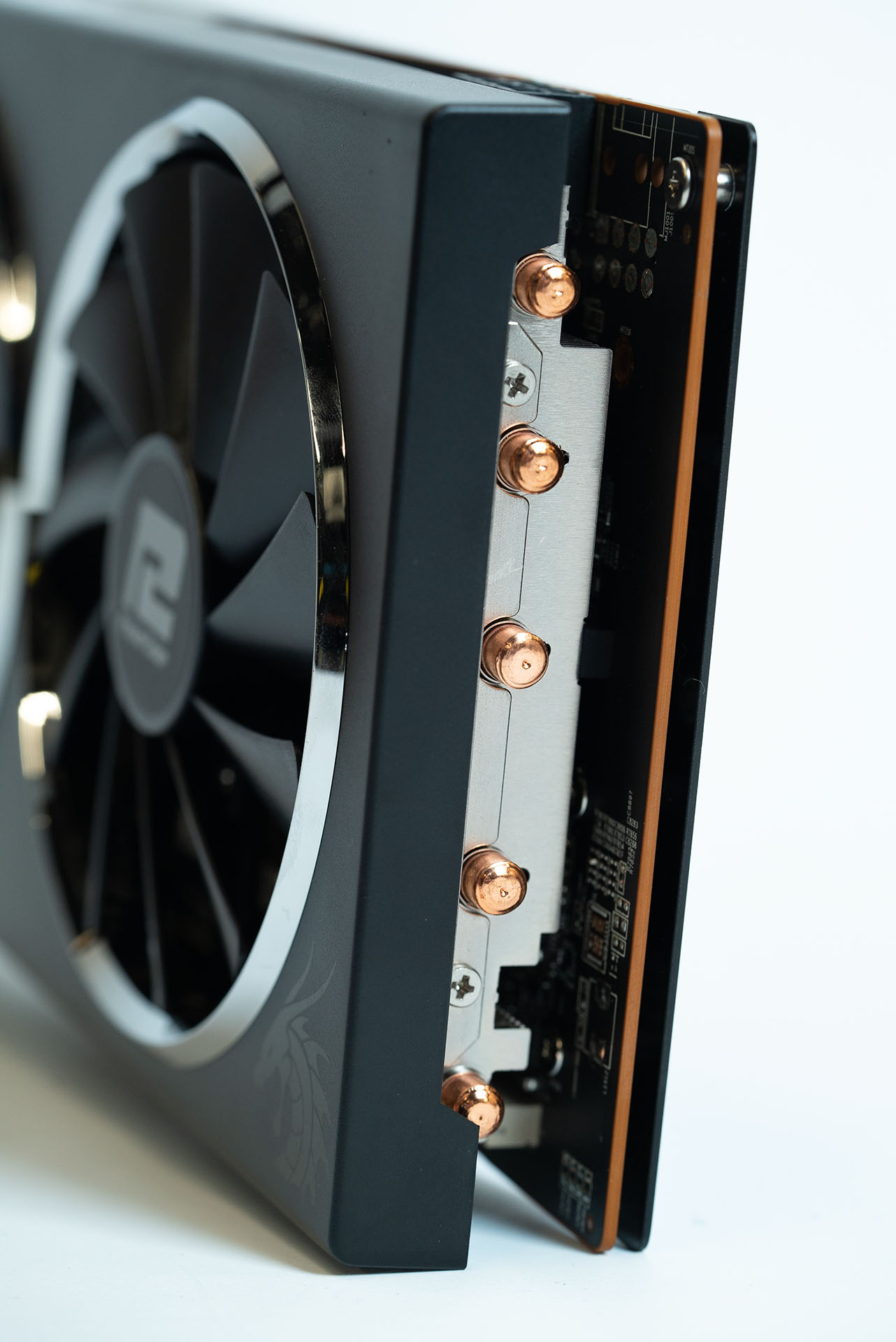
The lone eight-pin power plug brings total available power to 225W once the PCIe slot is included, and this is more than enough to cover the 150W TBP and any feasible overclocks.
Providing airflow is a pair of 100mm fans featuring double ball bearing motors. More important to the end-user is the fact that they’re semi-passive, meaning you can enjoy silence whenever the temperature is low enough (below 60°C, which typically covers idle/low-load scenarios).
The Red Dragon cooler comprises five 6mm copper heat pipes that draw heat away from the universal contact plate for the GPU and memory modules, all of which have full coverage from thermal pads. Five was originally going to be four, but PowerColor reintegrated a fifth pipe following the BIOS update. There are two aluminium fin stacks, one of which is also used to directly cool the main VRM components via thermal pads. The metal backplate is a nice touch, particularly as it is also used to dissipate heat away from the VRMs again with padding as the thermal interface. We can’t see any glaring issues with the cooler design; it looks solid and there are no obvious oversights.
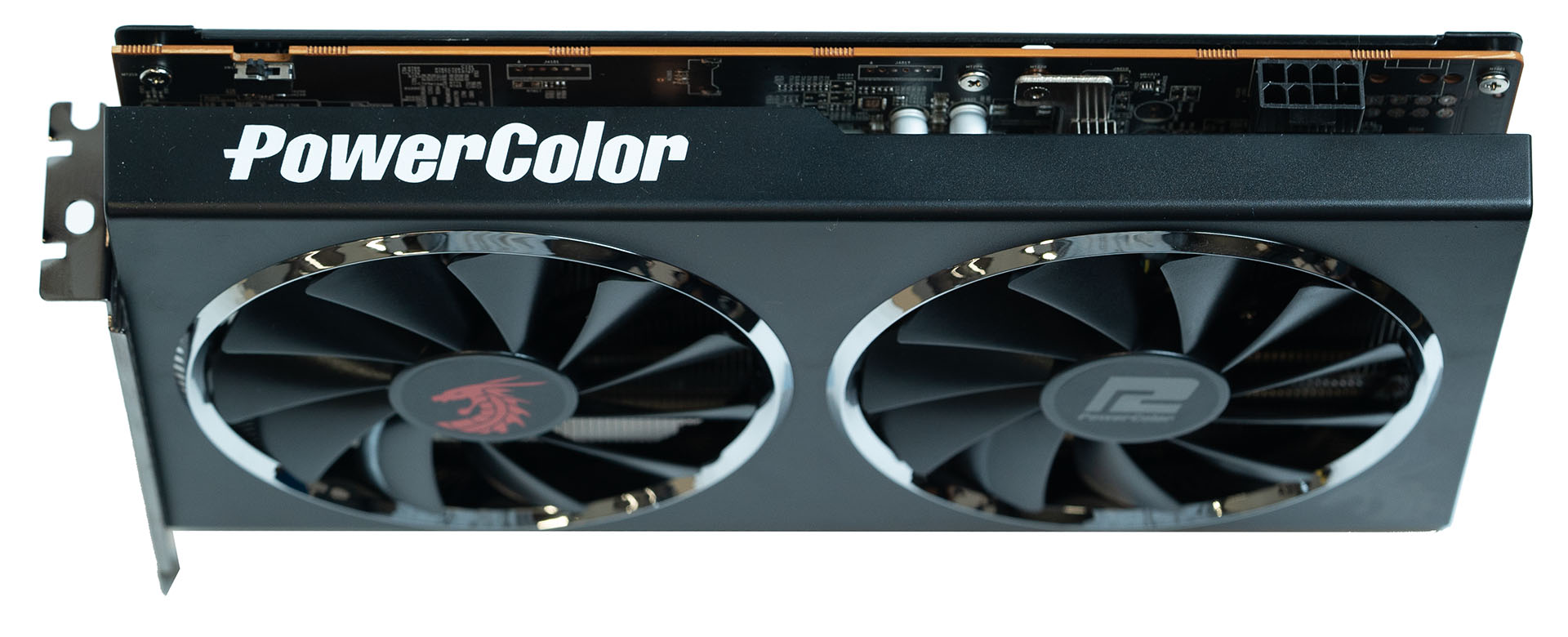
A 6+2 phase power configuration is great to see on a card at this level. PowerColor uses its DrMos components, specifically a digital controller and ‘super’ capacitors, claiming that they provide better efficiency and thermal protection as well as lower power loss compared to standard designs. The PCB is black, which is a nice touch from an aesthetic point of view, even if it is obscured by the cooler and backplate.
The card also has a dual-BIOS switch allowing users to toggle between the default Ultra OC BIOS and the Silent OC BIOS. The impact of this is primarily on the power limit and memory speed; Ultra OC sets these to 150W and 14Gbps whereas Silent OC drops them to 135W and 12Gbps.
The RX 5600 XT Red Dragon ships with a standard two-year warranty.

Specifications
- Graphics processor AMD Radeon RX 5600 XT, 1,560MHz game clock (1,620MHz boost clock)
- Pipeline 2,304 stream processors, 144 texture units, 64 ROPs
- Memory 6GB GDDR6, 14Gbps effective
- Bandwidth 288GB/s, 192-bit interface
- Compatibility DirectX 12, Vulkan, OpenGL 4.5
- Outputs 3 x DisplayPort, 1 x HDMI
- Power connections 1 x eight-pin PCIe, top-mounted
- Size 240mm long, 118mm tall, dual-slot
- Warranty Two years

MSI MPG Velox 100R Chassis Review
October 14 2021 | 15:04

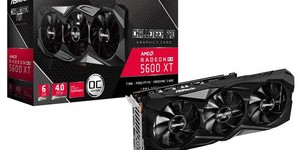
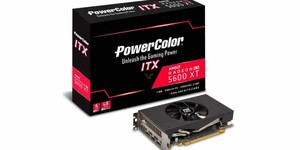
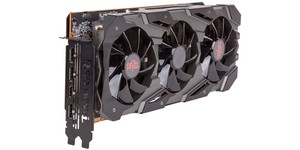




Want to comment? Please log in.